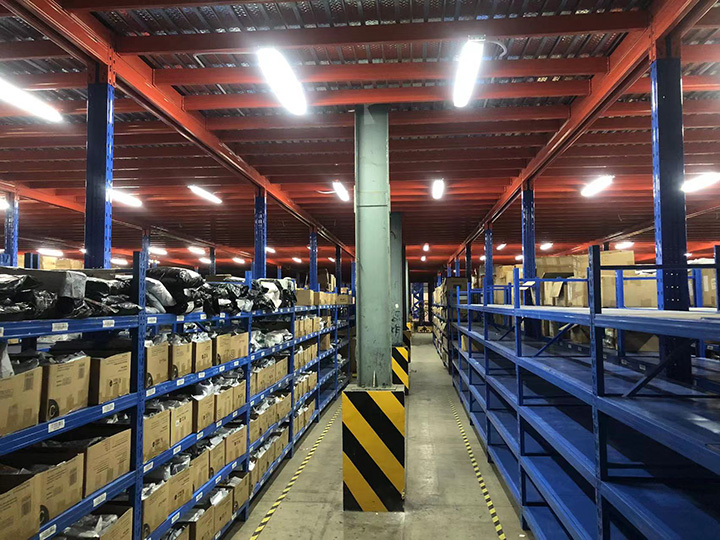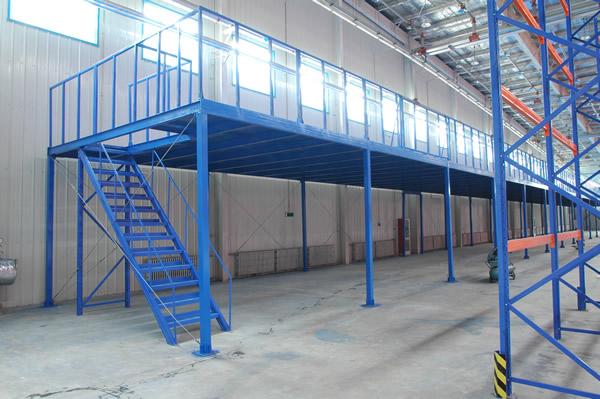In today's fast-paced logistics and supply chain industry, businesses are constantly seeking ways to optimize operations, reduce costs, and enhance productivity. One transformative innovation that has gained significant traction is automated warehouse shelving. This technology revolutionizes how goods are stored, retrieved, and managed, moving beyond traditional manual systems to embrace automation driven by robotics, software, and advanced sensors. As e-commerce and global trade expand, the demand for efficient warehouse solutions has never been higher. Automated warehouse shelving not only addresses these needs but also offers scalability and precision that manual methods cannot match. In this article, we will delve into five essential aspects of automated warehouse shelving, providing a comprehensive understanding of its components, benefits, and real-world applications. By exploring these elements, you'll see why this technology is becoming a cornerstone of modern warehousing, helping companies stay competitive in a dynamic market.

Automated warehouse shelving refers to a system where storage units are equipped with automated mechanisms for storing and retrieving items without human intervention. At its core, this technology integrates hardware like robotic arms, conveyor belts, and mobile shelving with software systems such as warehouse management systems (WMS) and artificial intelligence (AI). The process begins when an order is received: the WMS processes the data and directs automated equipment to locate and retrieve the required items from the shelving units. For instance, in a typical setup, automated guided vehicles (AGVs) or autonomous mobile robots (AMRs) navigate the warehouse aisles, accessing shelves that may be several meters high. Sensors and barcode scanners ensure accuracy by verifying item locations and conditions in real-time. This seamless operation minimizes errors and speeds up processes, making automated warehouse shelving a vital component in reducing cycle times and improving inventory accuracy. By eliminating manual tasks, companies can achieve higher throughput and better resource allocation, ultimately leading to enhanced customer satisfaction.
There are several types of automated warehouse shelving systems, each designed to meet specific operational needs. Understanding these varieties helps businesses choose the right solution for their warehouse environment. First, automated storage and retrieval systems (AS/RS) are among the most common, featuring cranes or shuttles that move along aisles to store and retrieve pallets or bins. These systems are ideal for high-density storage and can handle heavy loads efficiently. Second, carousel-based systems use rotating shelves to bring items to a stationary picker, reducing travel time and increasing order fulfillment rates. They are often used in distribution centers for small parts. Third, vertical lift modules (VLMs) consist of vertically arranged trays that automatically retrieve items, optimizing floor space and improving ergonomics. Fourth, mobile shelving systems incorporate automated platforms that shift entire rows of shelves to create access aisles only when needed, maximizing storage capacity. Lastly, robotic picking systems integrate with static shelving, where robots navigate and pick items directly. Each type of automated warehouse shelving offers unique advantages, such as space savings, speed, or flexibility, allowing warehouses to tailor solutions based on inventory volume, item size, and workflow requirements.
The adoption of automated warehouse shelving brings a multitude of benefits that directly impact a company's bottom line and operational efficiency. One of the primary advantages is increased productivity. By automating repetitive tasks, these systems enable faster order processing and reduce labor costs. For example, studies show that automated warehouse shelving can boost picking speeds by up to 50% compared to manual methods. Another key benefit is enhanced accuracy and reduced errors. With integrated sensors and AI, the systems minimize human errors in inventory management, leading to fewer misplacements and returns. Additionally, space optimization is a significant advantage, as automated systems often use vertical space more effectively, allowing warehouses to store more goods in the same footprint. This is crucial in urban areas where real estate costs are high. Moreover, improved safety is a notable benefit, as automation reduces the need for workers to perform hazardous tasks like climbing ladders or lifting heavy items. Finally, scalability allows businesses to easily expand their operations without major overhauls, adapting to seasonal demands or growth. Overall, automated warehouse shelving fosters a more resilient and responsive supply chain, driving long-term savings and competitiveness.

While automated warehouse shelving offers numerous advantages, its implementation comes with challenges that require careful planning. One major hurdle is the high initial investment. The cost of purchasing and installing automated systems, including robotics and software, can be substantial, often running into millions of dollars for large facilities. Businesses must conduct a thorough cost-benefit analysis to ensure ROI, considering factors like labor savings and increased throughput. Another challenge is integration with existing systems. Many warehouses operate with legacy software or hardware, and seamlessly integrating automated warehouse shelving can be complex, requiring customized solutions and potential downtime. Additionally, workforce training is critical, as employees need to learn how to operate and maintain the new technology. This may involve upskilling programs and change management strategies to address resistance. Technical issues and maintenance also pose risks; automated systems rely on precise components that can malfunction, leading to disruptions. Regular upkeep and having backup plans are essential. Lastly, data security must be considered, as these systems generate vast amounts of data that could be vulnerable to cyber threats. By addressing these challenges proactively, companies can smooth the transition to automated warehouse shelving and maximize its benefits.
The evolution of automated warehouse shelving is ongoing, with several emerging trends set to shape its future. One prominent trend is the integration of artificial intelligence and machine learning. These technologies enable predictive analytics for inventory management, allowing systems to anticipate demand patterns and optimize storage layouts autonomously. For instance, AI can analyze historical data to suggest the best locations for fast-moving items within automated warehouse shelving units. Another trend is the rise of IoT (Internet of Things) connectivity, where sensors and devices communicate in real-time to monitor shelf conditions, track inventory levels, and predict maintenance needs. This enhances the reliability and efficiency of automated warehouse shelving systems. Additionally, collaborative robotics (cobots) are becoming more common, working alongside humans to handle complex tasks without full automation. This hybrid approach balances automation with human ingenuity. Furthermore, sustainability initiatives are driving the development of energy-efficient systems, such as solar-powered automated shelving, to reduce carbon footprints. Lastly, modular and customizable designs are gaining popularity, allowing warehouses to scale and adapt systems quickly to changing market demands. As these trends advance, automated warehouse shelving will continue to become more intelligent, flexible, and integral to global supply chains.
In conclusion, automated warehouse shelving represents a significant leap forward in warehouse management, offering efficiency, accuracy, and scalability that traditional methods cannot match. By understanding its key components—from how it works and the types available to its benefits, challenges, and future trends—businesses can make informed decisions about implementation. As technology evolves, embracing automated warehouse shelving will be crucial for staying competitive in an increasingly automated world. Whether you're a small distributor or a large logistics firm, investing in this innovation can lead to substantial long-term gains, transforming your operations into a model of modern efficiency.
Q1: What is the average cost of implementing automated warehouse shelving?
A1: The cost of implementing automated warehouse shelving varies widely based on factors like system type, warehouse size, and complexity. For a medium-sized facility, initial investments can range from $500,000 to $2 million, including hardware, software, and installation. However, businesses often see a return on investment within 2-5 years due to reduced labor costs and increased efficiency.
Q2: How does automated warehouse shelving improve inventory accuracy?
A2: Automated warehouse shelving systems use technologies like barcode scanners, RFID tags, and real-time data sync with warehouse management software. This minimizes human error by automatically tracking item locations, quantities, and movements, leading to inventory accuracy rates of over 99% in many cases.
Q3: Can automated warehouse shelving be integrated with existing manual systems?
A3: Yes, many automated warehouse shelving solutions are designed for gradual integration. Through APIs and customized interfaces, they can work alongside manual processes, allowing businesses to phase in automation without disrupting current operations. However, this may require additional planning and investment.
Q4: What maintenance is required for automated warehouse shelving systems?
A4: Regular maintenance for automated warehouse shelving includes software updates, sensor calibrations, and mechanical checks on robots or conveyors. Most systems come with predictive maintenance features that alert operators to potential issues, reducing downtime. It's advisable to have a service contract with the provider for ongoing support.
Q5: Is automated warehouse shelving suitable for small businesses?
A5: While automated warehouse shelving is often associated with large warehouses, scalable options like modular carousels or mobile shelving can benefit small businesses. These systems offer flexibility and can be tailored to smaller budgets, helping improve efficiency and space utilization as the business grows.
 Wechat
Wechat
 Whatsapp
Whatsapp